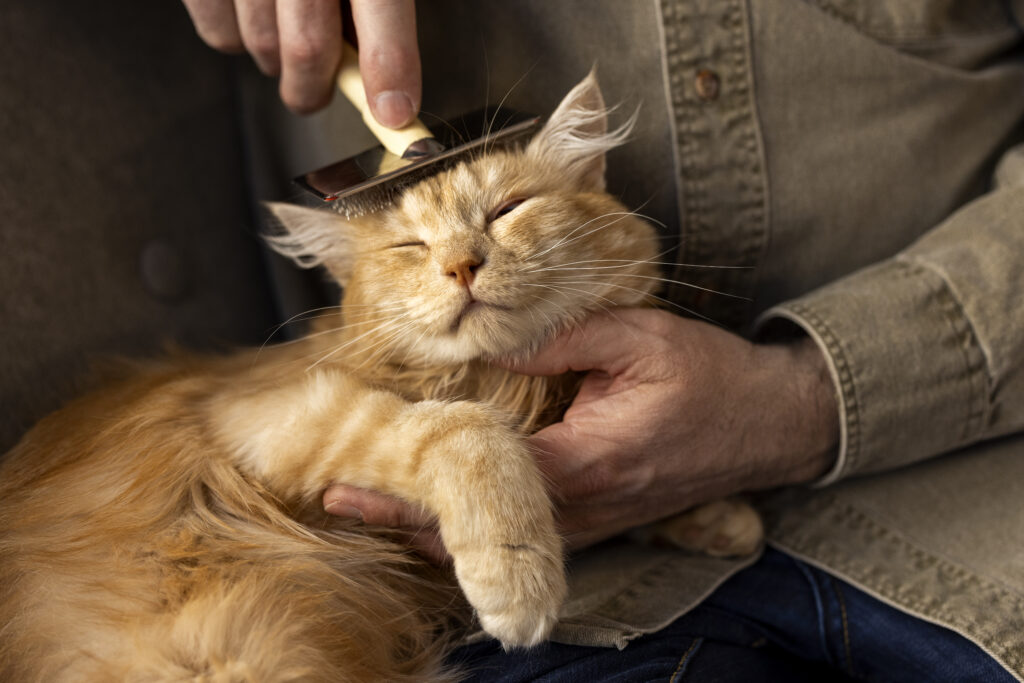
Welcome to a blog post on how to groom a cat at home with clippers. Cats can be groomed at home; this is a rewarding activity for both the cat owner and the cat, which will improve your friendship with your cat.
For some cats, grooming may be done occasionally, while others, especially those with long hair or thick fur, may need frequent grooming.
These types of mechanisms can be made less tedious if they involve clippers. This means it is easier to bathe and groom your cat and ensure it stays healthy at all times.
This article will provide information about grooming a cat at home using clippers, types of clippers, and the guidelines that should be followed to enhance the grooming process.
8. The top step to groom a cat at home with clippers
Below are the steps to groom a cat at home with clippers: 9 top steps
1. The Importance of Grooming
Grooming is a very essential activity, which is needed by your cat for its healthy living. Frequent combing and brushing also reduce stray hair, dust, and other particles on your cat; reduce the probability of the formation of mats; and give you a chance to assess your cat’s skin and other parasites. Breeds such as Persians and Ragdolls have longer, thicker fur; thus, they require grooming to minimize tangles and matting of the hair.
2. Selecting the Right Clippers
Full-Size Clippers: When learning how to groom a cat at home with clippers, opt for clippers specifically designed for pets rather than human clippers. Human clippers may cause cuts or nicks due to a cat’s delicate skin. Pet clippers are designed to accommodate the unique grooming needs of animals, ensuring a safer experience for both you and your cat when you groom a cat at home with clippers.
This way, you can provide a stress-free grooming session while keeping your feline’s fur mat-free and healthy.
3. Pet-Specific vs. Human Clippers
Theoretically, you can remove hair with human clippers from cats, but it is not recommended to do so. Cats have very sensitive skin, and they may get hurt by the normal clippers, which means that they experience cuts and nicks. For this reason, it is always best advised to select clippers intended for small animals such as pets. Pet clippers are generally designed for animals, hence fitting the cat’s grooming needs to enhance a safer process for even the groomer.
4. Preparing for the Grooming Session
- Gather Your Tools: Ensure all accessories are within reach: pet clippers, grooming scissors, a comb/brush, treats, and, if possible, a calming spray. Set Up a Comfortable
2. Set Up a Comfortable Space: Select an environment that is serene as well as well lit to minimize interferences. Using the same, you can cover it with a towel or blanket to give your cat a comfortable place to lie. Calm Your Cat: To begin with, spend a little time fondling and reassuring your cat.
3. Calm Your Cat: Before you get down to that, spend some time stroking and cuddling your pet cat. Bribing can help bring about a good relationship with the grooming process
\
5. The Grooming Process
Step 1: Brushing
Unfortunately, the bald areas should be brushed to remove dead skin and hair and to untangle any tangles on the coat. This is a very important stage that facilitates the clipping exercise and makes it easier and less time-consuming. Concentrate more on the opposed regions where your pet develops mats, especially on the ears and legs
Step 2: Clipping:
Select the Appropriate Blade: When grooming, also ensure that you are using the right size of the blade for the task at hand. Firm point blades are good for general depilation, but special care is required when used on small areas of the face and body or around moles, birthmarks, and the like, as the blade number will be smaller, like a #10 or #7 is different from a #2. Step
Step 3: Apply Gentle Pressure:
When clipping, it is preferable to exert minimal pressure on the clippers as you run them along your cat’s body. Don’t apply too much pressure on the skin; this could be very irritating to their skin type.
Maintain Some Length: Your cat’s coat should be trimmed up to one inch long or longer if what you are seeking is a lush, silky appearance. It also benefits from avoiding possible future hair growth problems and skin problems.
Take Breaks: When grooming your cat, take a break often enough to avoid having her overheat or get stressed up with the whole process.
Step 6. Inspect for Skin Issues
When you are grooming your cat gently run your hands over their skin to feel for lumps, rashes, and signs of parasites. In case you noticed any of these changes, you should discuss them with your vet for further instructions. For more, you can read this cat health guide.
7. After Grooming Care
This is because your cat will only associate joy and pleasure with grooming and will quickly learn the procedure of grooming as a way of making you happy. Gentle brushing afterwards can also be done to eliminate any remaining shedding hair and to help your cat relax.
8. Does Cat Fur Regrow After Shaving?
The coat of a healthy cat takes about 3 to 18 months to grow and comes back completely in a breed- and hair-length-specific manner. However, such a cycle results in a slower hair regrowth process after clipping since skin follicles could be resting. As a result, the hair growth within cats is far from uniform; some will take longer to grow back, and there are times when the hair texture and coloration may change, too.
Conclusion
It is helpful to know that many cat owners find that grooming their cats at home using clippers is both easy and fun. In conclusion, adapting full-size clippers designed for pets, combined with the above medications, is essential to keep your feline friend healthy. Remember that persistence is the key, but if you are reluctant to do it yourself, there’s nothing wrong with booking professional grooming. To learn more about cat grooming, visit our cat grooming information site. Happy grooming!
FAQ
- How to deal with a nervous cat during grooming?
Try to calm your cat with treats and a soothing voice. Taking breaks and providing positive reinforcement can help make the process easier.
